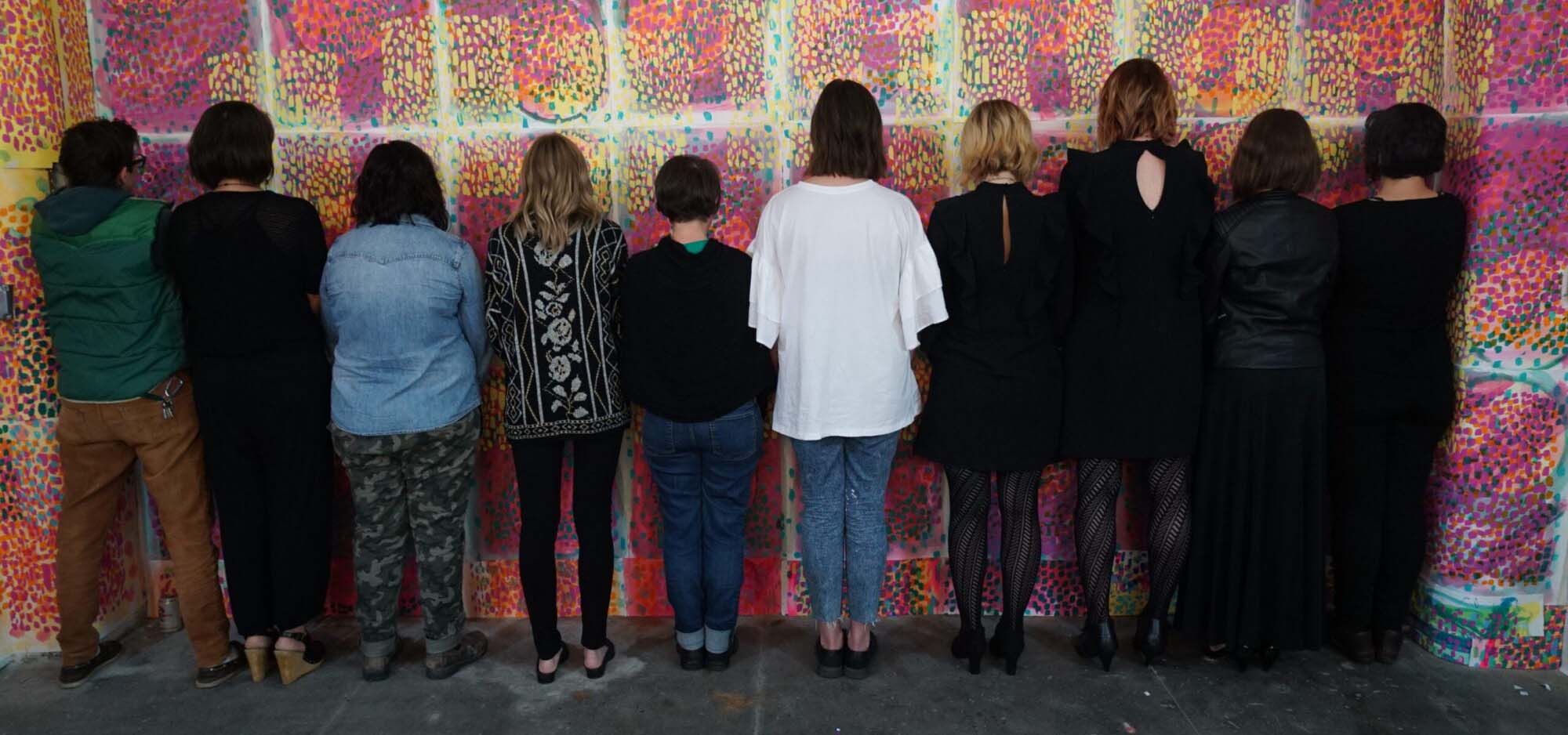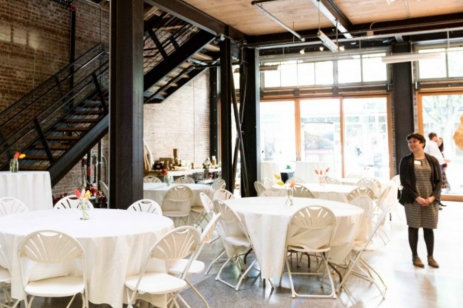Safety in Numbers is an iterative installation and performance created by Seattle-based artist, Molly Vaughan.
The performative component of this work invites volunteers to participate in an act of trans-allyship by receiving a haircut identical to Vaughan’s to modify their appearance. By creating a cohort of clones, the artist calls attention to the power of anonymity and how it provides members of less marginalized communities the ability to move through society harassment free.
The exhibition will include functional elements of a salon that are intentionally set to stage the performance. Segmenting the space into areas for activation and secondary programming, Vaughan utilizes large abstract panels with designs based on places of personal importance. This motif—which Vaughan refers to as a geographical biography—is repeated throughout the installation on various materials and surfaces, as a mechanism to disrupt perception of the studio’s dimensionality. In this third iteration of Safety in Numbers, Vaughan tightens her conceptual framework by restricting the available cut to only include a traditional bob. This particular style is notable for its history of disrupting gender conventions and its subsequent evolution as a symbol of femininity in contemporary western culture. Throughout her practice, Vaughan has considered the sociohistorical significance of hair by frequently utilizing it as a material or centering it as the subject of her work. In Safety in Numbers she relies on her belief in the potency of hair to act as a vehicle for social justice, as well as aesthetic beauty.
As in past iterations, the documentation of participants’ transformations is integral to the activist nature of this work. The performative element culminates in a final workshop led by Vaughan, where volunteers are asked to engage in an act of trans-awareness by receiving and responding to a prompt based on real life experiences of a trans individual. This activity is designed to leave visitors with a deeper understanding of the legal and social systems employed to oppress members of marginalized communities.
The installation will be intermittently activated with performance during the month of June and visitors are welcome at any time during the performances or regular studio hours.


